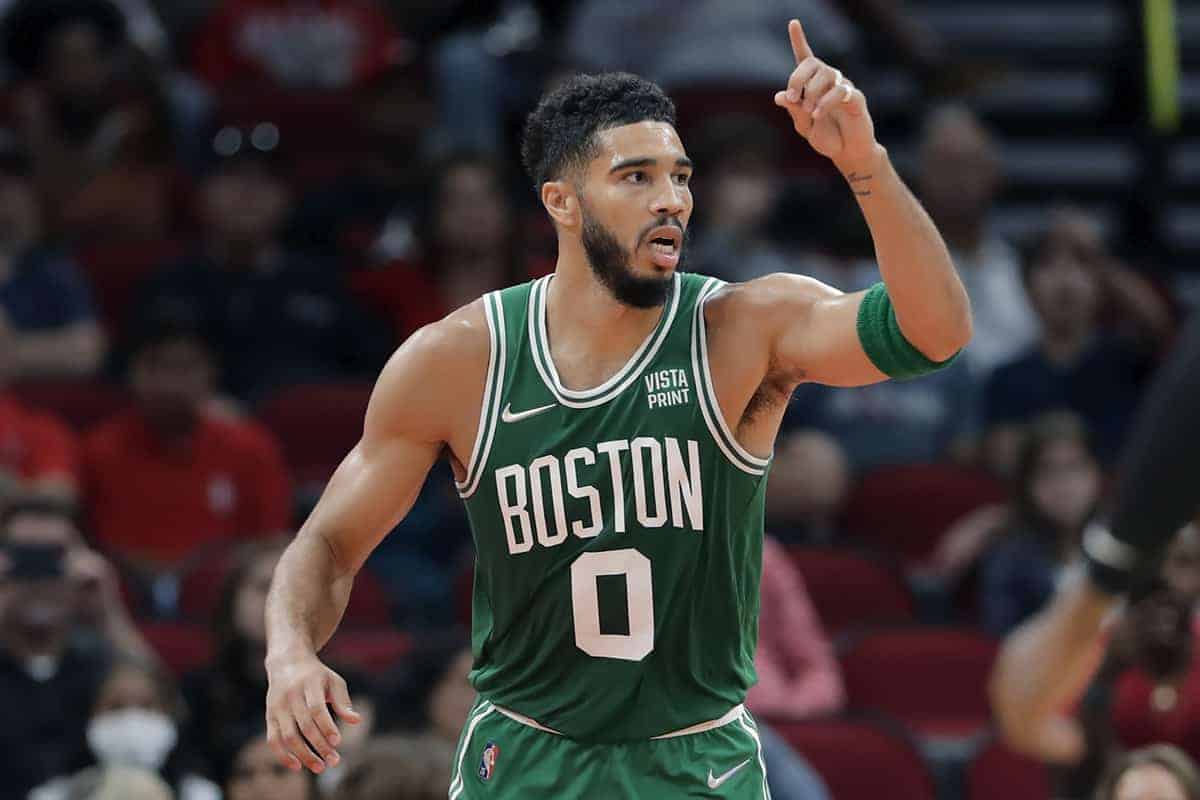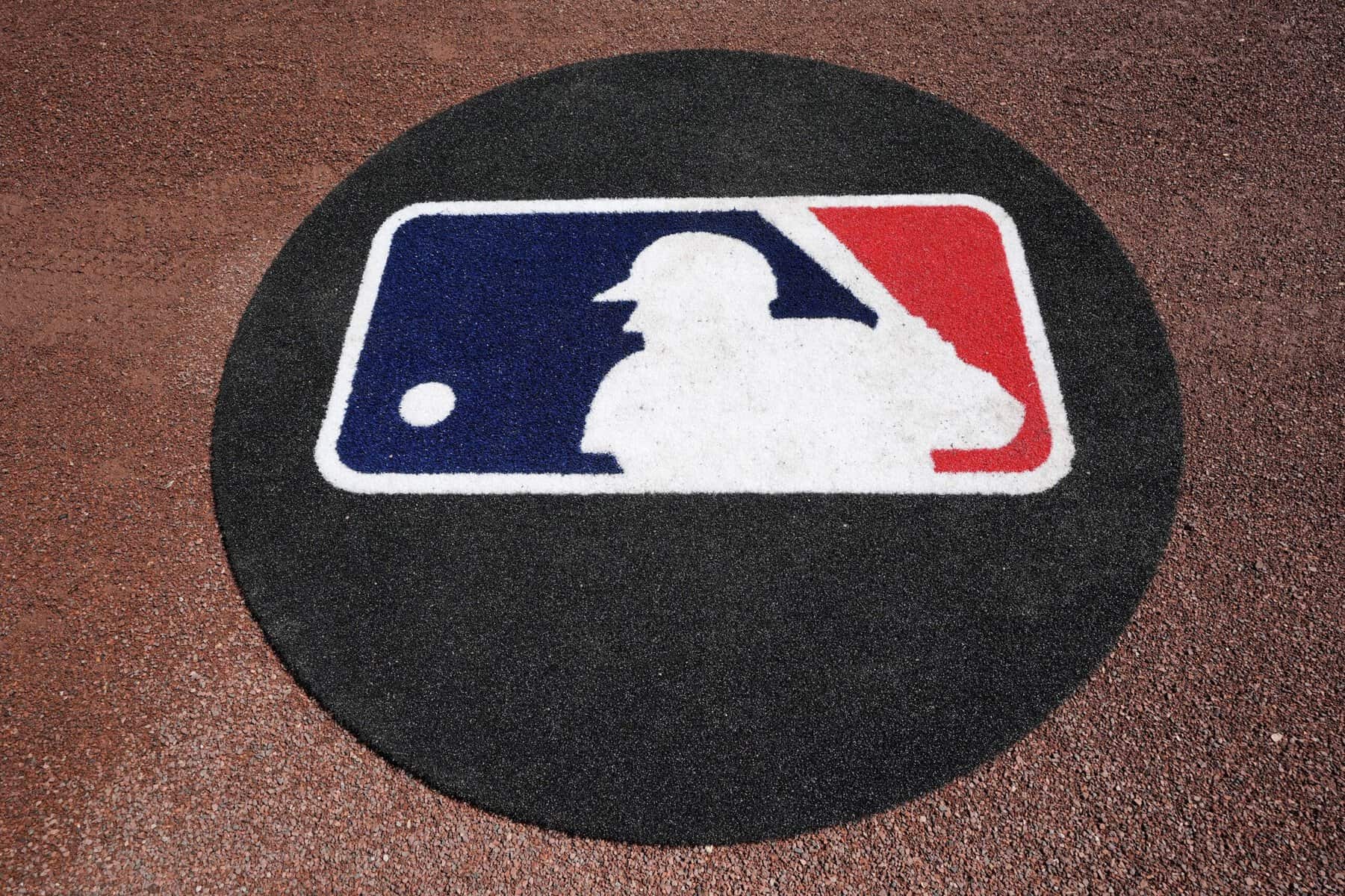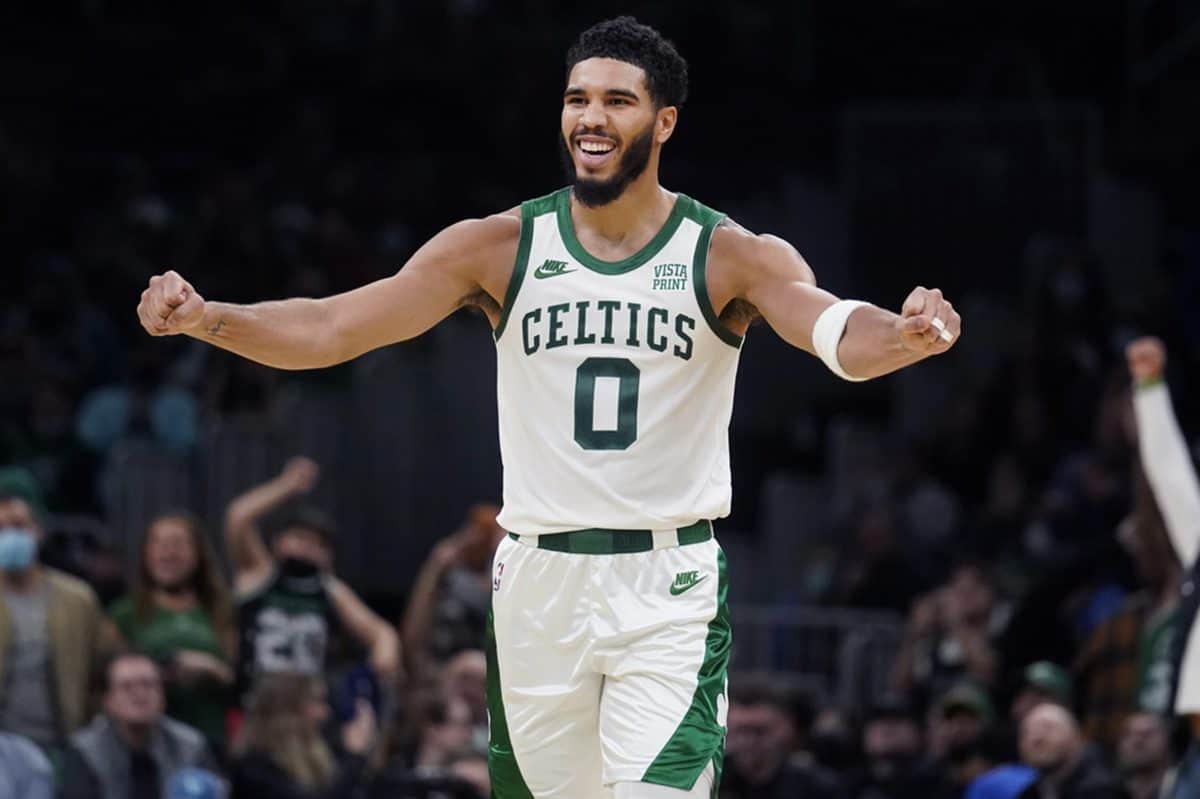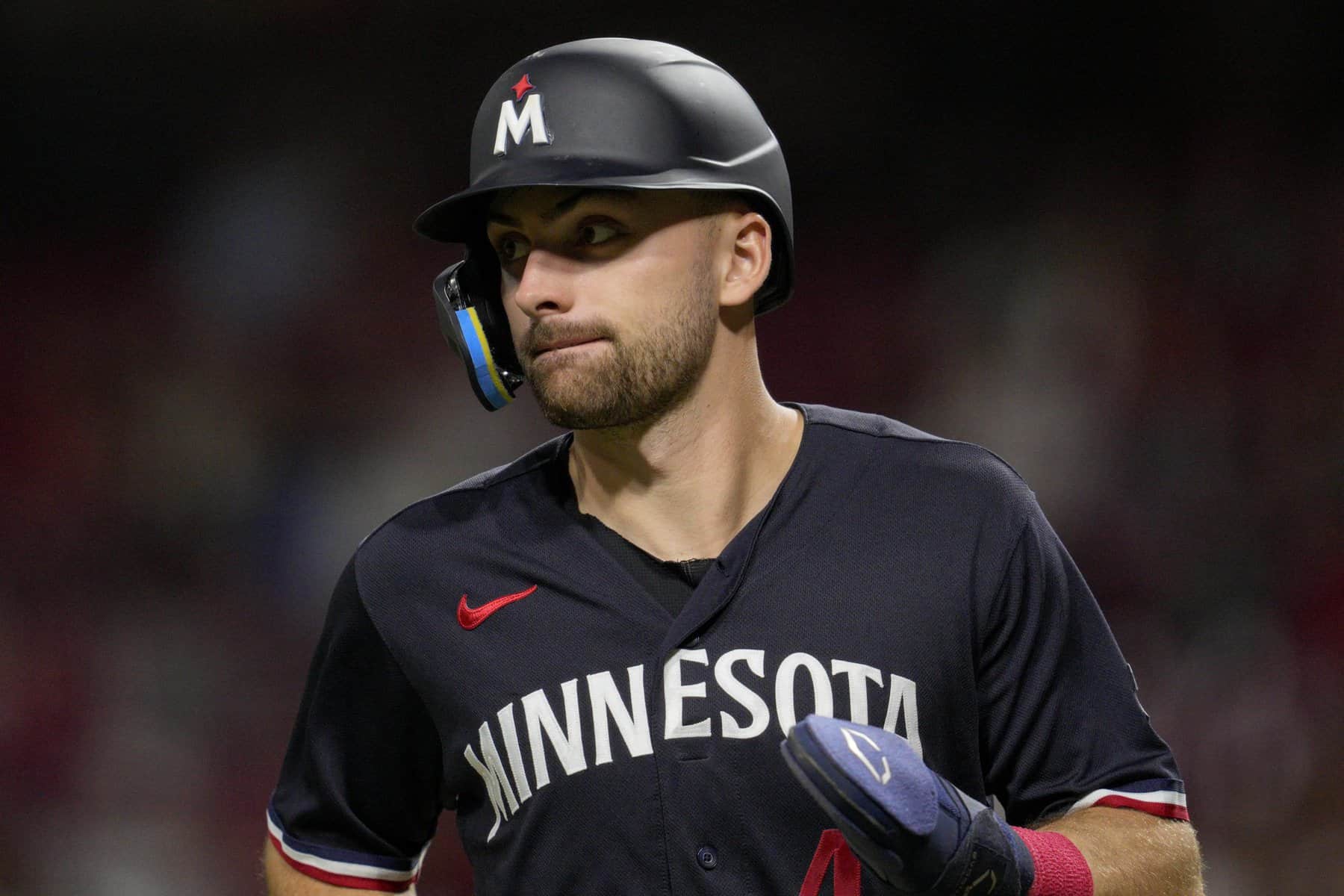With the NFL Draft quickly approaching, dynasty and fantasy drafts are on the horizon. Focusing on the skill position players, here is a list of the top 10 wide receivers from an analytical perspective in this year’s 2021 NFL Draft class. For bookkeeping purposes, College Dominator refers to the percentage of receiving yardage and touchdowns a player accounted for and Breakout Age refers to the age a player hit a 20% College Dominator threshold for the first time. Let’s dive into the rookie rankings.
[UFC261]
2021 NFL Draft Rankings: Top 10 Rookie Wide Receivers
1. Ja’Marr Chase — LSU
One of the true blends of size and speed in this class, Chase ran a 4.34 40-yard dash at 6 feet, 201 pounds. Initially a four-star recruit and the No. 15 receiver in the 2018 recruiting class, Chase quickly emerged as an elite offensive weapon in LSU’s offense.
Chase started his college career slowly with just 313 yards on 23 receptions as a freshman. However, he competed with Justin Jefferson and Terrace Marshall Jr. throughout his career. Chase fully broke out at age 19 in his sophomore season, winning the Biletnikoff Award as the country’s best receiver. He posted 84 catches, 1,780 yards and 20 scores, giving him a 33.9% College Dominator and 21.9% target share. LSU often used Chase down field from the wide alignment (86% of snaps wide). He finished with 24 catches beyond 20 yards, 8.1 yards after the catch and 21.2 yards per receptions. Dicing up the best corners in the SEC, Chase recorded at least four catches, 88 yards and a score against C.J. Henderson, Trevon Diggs and A.J. Terrell in 2019.
Despite opting out of the 2020 season, Chase is the favorite to be the first wide receiver drafted. Both picking in the top six, Cincinnati could reunite Chase with Joe Burrow at fifth overall, or Miami could add him to an explosive offense featuring Tua Tagovailoa, Will Fuller and DeVante Parker. Either way, Chase likely will come off the board in the top 10 and find immediate opportunity. Chase compares closely to former deep threat Mike Wallace.
2. Devonta Smith — Alabama
For all that Chase accomplished in 2019, Smith doubled down in 2020, winning the Heisman and the Biletnikoff Trophy. Initially a four-star recruit and the No. 9 receiver in 2017, Smith entered a wide receiver room carrying Calvin Ridley, Jerry Jeudy, Henry Ruggs and Jaylen Waddle. Despite playing alongside three first round picks, Smith quickly emerged as a premier route-runner in Alabama’s offense.
While Smith technically broke out during his junior season at age 20, Alabama used him in a feature role even as a sophomore in 2018. Smith ranked second on the team in catches and receiving yards before a hamstring injury caused him to miss time. He ultimately finished as the fourth-leading receiver that season.
Moving forward to 2019, Smith led the team with 1,256 yards despite still playing with Jeudy, Ruggs and Waddle. With Jeudy and Ruggs departing for the 2020 NFL Draft, Smith erupted for his 117-catch, 1,856-yard and 23-touchdown season in 2020. This equates to a mind-blowing 47.3% College Dominator and 35.8% target share in Alabama’s offense. Running from various alignments, Smith played 34.6% of his snaps in the slot. He created 953 yards after the catch and also won downfield with 15 catches beyond 20 yards.
While Smith won all over the field alongside other first-round receivers, he still brings concerns. Checking in at 6-foot-0, 170 pounds, receivers just aren’t built like Smith in today’s NFL. Potentially struggling with press coverage and physical NFL corners, Smith requires some projection at the NFL level. Still, he is one of the more decorated receivers in college football history and likely leaves the board in the top 15 with immediate opportunity. There are shades of Marvin Harrison to his game.
3. Jaylen Waddle — Alabama
The second receiver making the cut from Alabama, Waddle is the same age as Smith despite playing one fewer season. Waddle entered college as a four-star recruit and the No. 5 receiver in 2018. Also playing in the shadows of Jeudy and Ruggs, Waddle didn’t earn a full role until 2020. Unfortunately, a severe ankle injury reduced this season to just four full games.
Waddle’s top collegiate season actually occurred as a freshman in 2018. With Smith banged up for part of the year, Waddle notched 45 receptions for 848 yards and seven scores. Even with Smith active, Alabama still found ways to get the ball in Waddle’s hands. On top of gadget plays, Waddle returned 38 punts and nine kick offs in his short college career.
Waddle only played four full games as a junior but eclipsed 100 yards in each of them. He ran 60.7% of his routes from the slot and recorded a 27.6% target share when healthy. Still, Waddle is a bit undersized at 5-foot-10, 182 pounds. He also couldn’t test athletically, due to his severe ankle injury. Many compare Waddle to Tyreek Hill due to the speed and ability to create yards after the catch. However, he just hasn’t played much football to this point in his career, making him more of a projection. A consensus top-three receiver throughout the industry, Waddle still likely receives early opportunity in an NFL offense. He plays somewhere between Darnell Mooney and Tyreek Hill.
Latest NFL DFS Content
- Want to Learn How to Win a DraftKings Milly Maker With Stokastic Sims? Steve Buzzard Will Tell You How
- PrizePicks, Sleeper & Underdog Cheat Sheet: Best More/Less Picks Today for NFL (February 11)
- DraftKings NFL Cheat Sheet: Super Bowl Sims Picks | George Kittle
- NFL Super Bowl 58 DFS Picks: 49ers vs. Chiefs (February 11)
- NFL DFS Captain Picks for Super Bowl 58: Rashee Rice, George Kittle & More
- Stokastic DFS on Youtube
4. Rashod Bateman — Minnesota
Standing 6-foot-0, 190 pounds, Bateman put up an elite 4.41 40-yard dash at Minnesota’s pro day. Battling COVID-19 during the 2020 season, Bateman only played five games in the 2020 season. Notably, the disease also caused Bateman to lose 15 pounds, which he mentioned has been a struggle to regain. Most expect Bateman’s playing weight to hover around 200 pounds.
Despite taking a statistical step back in 2020, Bateman still has the collegiate profile of a day one receiver. Bateman broke out immediately as a freshman, while playing alongside future NFL slot receiver Tyler Johnson. Bateman notched 704 yards as a freshman, before reaching 1,219 as a sophomore. These numbers give him an elite 36.3% College Dominator and 45.1% target share in Minnesota’s offense.
Bateman did most of this work from the outside, while Johnson functioned as the team’s primary slot. Bateman also won downfield, catching 14 balls beyond 20 yards and winning in contested situations. Also using excellent releases and skills as a route runner, Bateman’s game mirrors Stefon Diggs coming out of college. Bateman recently received some late first round hype and could fit a team likely New Orleans. Behind the top three, Bateman looks like another candidate for early NFL opportunity.
5. Elijah Moore — Ole Miss
The 2020 wide receiver class features an abundance of slot receivers. Highlighted by Moore, a few of these prospects continue to receive first-round buzz. Like the receivers listed above, Moore entered an Ole Miss depth chart featuring D.K. Metcalf, A.J. Brown, DaMarkus Lodge and Dawson Knox as a freshman. However, when injury sidelined Metcalf, Moore quickly emerged as a dangerous weapon from the slot.
While Moore didn’t breakout till age 19 during his sophomore season, he still played considerably as a freshman. The Rebels used him on 27 punt and 12 kick returns before he took over the slot when Metcalf went down. Moore played on at least 85% of snaps in each of Ole Miss’ final four games during his true freshman season.
With the entire receiving corps leaving for the 2019 NFL Draft, Moore emerged as the team’s alpha receiver. Moore played almost exclusively in the slot during his Ole Miss career, but he notched 850 and 1,193 yards in two seasons. Only playing in eight games as a junior, Moore accounted for a 45.5% College Dominator and a 40.4% target share.
Despite playing mostly the slot, Moore checked in at 5-foot-9, 185 pounds with a 4.35 40-yard dash. Moore requires some projection if teams want him to play the outside. However, his physical profile mirrors Steve Smith and T.Y. Hilton. With slot receiver running deep in this class, Moore’s draft selection and playing time are more volatile than the top receivers on this list.
6. Terrace Marshall Jr. — LSU
A late riser in the NFL Draft process, Marshall looks different than much of the slot-specific class. Marshall stands 6-foot-3, 205 pounds and ran a 4.40 40-yard dash at LSU’s pro-day. While Marshall doesn’t have the same production as others in this class, his size and athleticism have pushed him up draft boards late in the process.
Coming out of high school, Marshall earned five-star honors from recruiting services in the same class as Chase. Playing with Chase and Justin Jefferson through the first two years of his career, the LSU receivers often canalized each other. Marshall finished an injury-shortened 2019 season with 46 receptions, 671 yards, and 13 scores in just 12 games. With Jefferson entering the 2020 NFL Draft and Chase opting out of the 2020 season, Marshall recorded 48 receptions, 731 yards and 10 touchdowns as the alpha in 2020. Opting out after seven games himself, Marshall finished with an elite 46.1% College Dominator and a 25.4% target share.
Playing outside early in his career and moving into the slot in 2020, Marshall displayed the versatility to play across the formation in the NFL. A proven touchdown scorer, NFL teams will covet Marshall’s blend of size and speed. Often entering the back half of first-round mocks, a team like Tennessee could look at Marshall early. Rising throughout the process, Marshall looks likely to come off the board early on day two at the latest.
The Latest Sports Betting Content from Stokastic Odds
- BetMGM North Carolina Pre-Registration: $200 in Bonus Bets Awaiting You When Sports Betting Launches
- Bet365 North Carolina Pre-Registration: Get $100 in Bonus Bets Before March 11
- DraftKings North Carolina Pre-Registration: Up to $300 in Bonus Bets for NC Launch on March 11!
- FanDuel North Carolina Pre-Registration: Grab $300 in Bonus Bets Between Now and March 11!
- Bet365 Louisiana Bonus Code: Bet $1, Get $365 in Bonus Bets!
- Stokastic DFS on Youtube
7. Rondale Moore — Purdue
One of the toughest prospects to evaluate in the class, Moore put together his most productive season as a true freshman. Injured for a majority of the last two seasons, he never got the chance to progress through his college career. Despite the stagnation, Moore’s freshman tape should still have NFL front offices excited for an early day two selection.
A true unicorn in the 2021 class, Moore stands just 5-foot-7, 181 pounds. One of the most explosive athletes in the class, Moore ran a 4.31 40-yard dash and jumped 42.5 inches in the vertical. Still, Moore looks limited to slot-only role due to size. With one of the smallest frames ever recorded coming out of college, Moore will require a hyper-accurate signal-caller at the next level.
Even with the limitations, Moore already showed the ability to win against NFL players as a true freshman. He put up 114 catches, 1,258 yards and 12 touchdowns, running primarily from the slot. This gives Moore an absurd 37.2% College Dominator and 36.4% target share. Unfortunately, Moore never received the chance to develop a full route tree and functioned mainly in a gadget role throughout his career.
Even without the production, the elite athleticism warrants consideration. Moore has received some first-round buzz, but he likely will fall to Day 2 over size and injury concerns. While he won’t work in all schemes, creative play callers should find a way to utilize Moore’s dynamic skillset immediately.
8. Kadarius Toney — Florida
Another slot prospect, Toney worked through an interesting career at Florida. Initially recruited to play running back, Toney didn’t switch to the wide receiver position until his sophomore season at Florida. Also battling injuries and issues off the field, Toney is a difficult evaluation.
After failing to eclipse 260 yards receiving during his first three seasons at Florida, Toney finally broke out as a 21-year-old senior. In this season, Toney notched 70 receptions, 984 yards and 10 touchdowns in Florida’s explosive offense. Despite the strong counting stats, this only equated to a 21.7% College Dominator and an 18.3% target share in Florida’s explosive, vertical offense.
Like many of the other slot specific weapons, Toney has elite athleticism. He checked in at 6-foot-0, 193 pounds with a 4.37 40-yard dash at Florida’s pro day. Playing 82% of his snaps in the slot, 477 of Toney’s yards came after the catch in 2020. He did record seven catches beyond 20 yards, but he still is a project with his route running and downfield ability.
Similar to Waddle, Toney’s highlight reel and ability to make defenders miss will be tantalizing for some NFL teams. Toney also returned 15 kicks and 13 punts. However, Toney’s tendencies to freelance and his late breakout age will have some teams concerned. Similar to Moore, Toney looks likely for a late Day 1, early Day 2 selection.
9. Dyami Brown — North Carolina
One of the true vertical threats in this class, Brown checked in at 6-foot-1, 189 pounds at North Carolina’s pro day. While slight in frame, Brown ran a 4.44 40-yard dash and continually won down field during his time at Chapel Hill.
Specifically, Brown broke out as a 19-year-old sophomore in 2019. He posted back-to-back seasons with at least 51 catches and over 1,000 yards receiving. More importantly, he averaged over 20 yards per reception in each of those seasons, while playing primarily on the boundary. Overall, Brown finished with a 30.9% College Dominator and a 21.3% target share.
Like his profile suggests, Brown’s explosion downfield will have teams chasing his athletic ability. He posted 26 catches of 20 yards in his last two seasons, scoring 20 total touchdowns. Brown hasn’t delivered much after the catch in his career, but he was also rarely asked to do so. Brown didn’t record a single reception from the slot or on screen passes in all of 2020. Likely coming off the board sometime on Day 2, Brown is landing spot depended, but the physical profile suggests early NFL success.
10. Tylan Wallace — Oklahoma State
Another player without elite size, Wallace checked in at 5-foot-11, 193 pounds at Oklahoma State’s pro day. Wallace also ran a 4.49 40-yard dash, squashing all athleticism concerns after he tore his ACL in 2019. A tweener in size, Wallace finds himself all over the place in early wide receiver rankings despite some truly special traits.
Another early producer at the college level, Wallace first broke out in 2018 as a true sophomore at age 19. Wallace notched 86 catches, 1,491 yards and 12 touchdowns that season before playing in a pair of shortened seasons in 2019 and 2020 (ACL and COVID-19). This also gave Wallace an elite 35.4% College Dominator and a 31.7% target share.
However, Wallace still proved productive in his latter two seasons, with 903 and 922 yard, respectively, averaging just under 100 yards per game. Wallace operated primarily on the perimeter, playing 86.6% of his snaps outside. Unlike Brown, he showed the ability to both win downfield and create after the catch. Wallace averaged a 9.8 yards after the catch per reception in 2020. One of the true wild card prospects in the draft, Wallace could sneak into the early part of day two with the production displayed at Oklahoma State. He is dependent on landing spot, however.
Follow us on all of our social channels! Check out our Twitter, Facebook, Instagram and YouTube for more great Awesemo content.
[NFLPAGE]

















